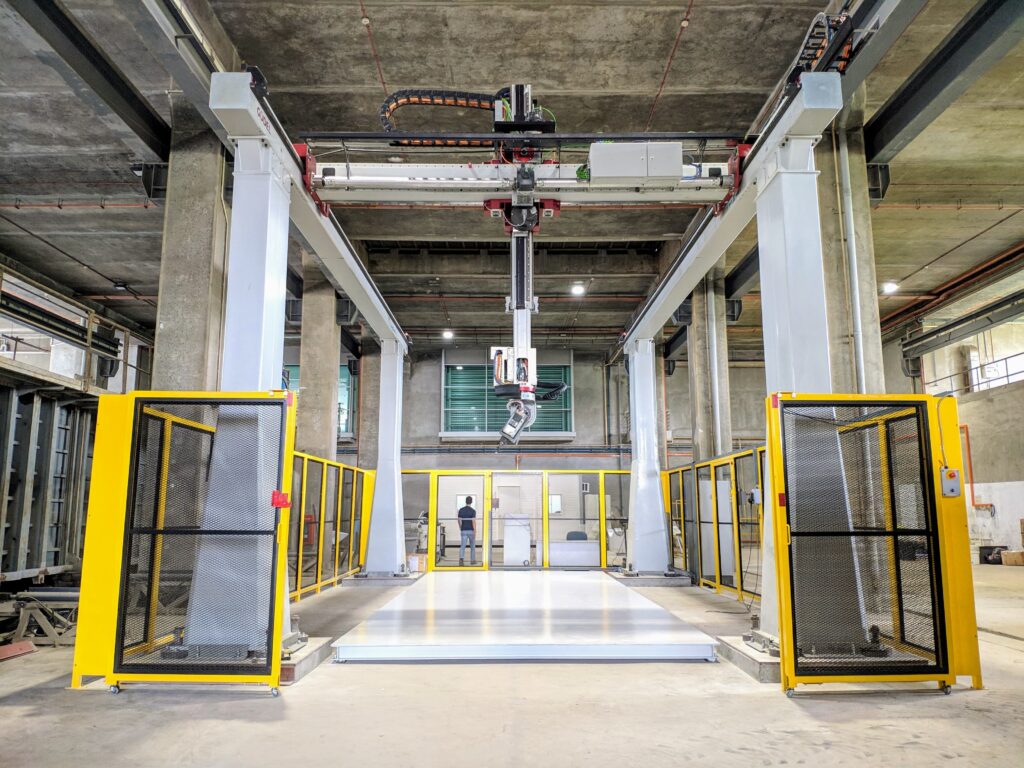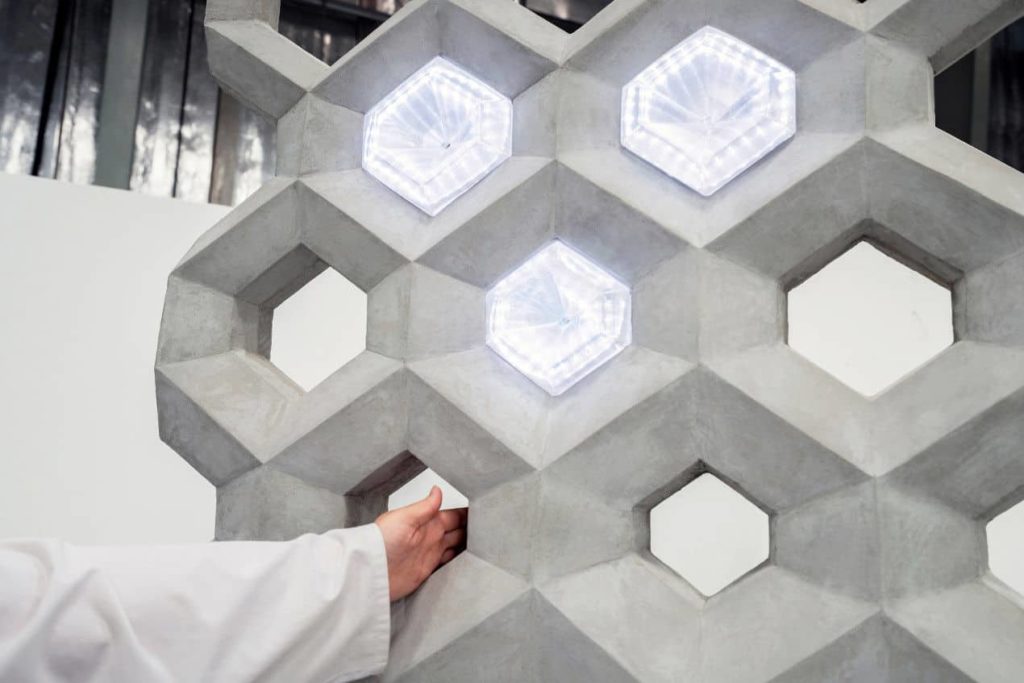Whereas, in general, the additive construction hype is focused on houses, I’m much more focused on 3D printing money. I think that locally 3D printing mass-customized infrastructure at a factory and then trucking the parts to building locations is the most logical, profitable, and impactful opportunity out there. For the developing world, it would mean that the single most important infrastructure elements that can be 3D printed would be made to spec regionally, as per the most pressing needs. So, stakeholders wouldn’t put in a whole sewage system centrally, but print out septic tanks and cisterns where the need is the highest, resulting in the highest impact. Such an approach also lends itself well to disaster relief. The U.S. military is already looking at this, just starting a $3.5 million project to look at swarm based 3D printing of concrete structures at disaster sites.
The US Army project at the University of Arkansas will look at using collaborative robots to print vertical structures, such as culverts and Jersey barriers. The team will explore local soils and other materials to see how they can be incorporated into 3D printing concrete mixes, along with qualifying parts and materials. As we’ve said previously, construction 3D printing could get an even bigger boost from US self reliance and infrastructure spending.
Why Perform Construction 3D Printing for Disaster Relief?
 The completed concrete slab with half of the 3D printed foam elements removed. Image courtesy of ETH Zürich.
The completed concrete slab with half of the 3D printed foam elements removed. Image courtesy of ETH Zürich.NGOs and governments helping out in a disaster often don’t really know what to bring. They also often bring the wrong things. It is pretty difficult to obtain all of the interlocking components of a construction project together just after an earthquake or war. Research has indicated that, generally for disaster relief, 3D printing could be the ideal tool for a builder’s knapsack. Additionally, disaster situations are almost always constantly evolving with needs changing over time, sometimes very suddenly. Timely production of the right things is something that 3D printing really excels at. Additive manufacturing (AM) can also iterate quickly, so if a better design is needed, it’s possible to make that part faster than with other processes.
Often in disaster areas, it is expensive and difficult to protect, feed, and provide for aid workers. So, each additional worker is a burden on the system that makes the system less efficient. An aid agency, like an army, marches on its stomach. 3D printing for construction could be efficient in make timely structures of the right design by using comparatively few people. In some cases, a lot of the iteration and design capability could be outsourced to others who are more conveniently located overseas. That would also let a group to make the right thing at the right time. It is in at this difficult moment to make the right thing that is the key thing at this difficult place.
Product Help Fit
So, yes, it is possible to build structures to house people in, but we’ve seen that refugees can survive in tents for many years. This is not optimal or kind, but it is cost effective. Tents are light, they’re easy to transport, and they’re inexpensive. However, imagine you need a safe building to store food aid, like a silo or other structure to keep grain in sheltered from water and animals. Or you urgently need a septic tank set up to keep cholera from spreading through a village. Those are more difficult goals to achieve. Think of a few villages that have been completely cut off by land slides. AM could be used to make simple pedestrian bridges exactly to size in a week. Exposed rock in danger of causing landslides, build a wall that would stop them or change the slope through concrete elements. A sea wall has been washed away by the storm, quickly rebuild it before there are more floods. These are all cases where 3D printing could really play a role.
Timely and Correct
The main thing here is that, with relatively few people on site, it’s possible to mass customize designs that are optimal for solving a given problem. Sure, one could build cookie cutter structures to house all of the refugees. But, in that case, other methods may be more cost-effective, or simply more cost-effective for the time being. With AM, there is a unique ability to make precisely the right structure with the right shape, design, and properties to adequately solve a problem in a timely manner. The technology can be used to print footbridges on Monday, wells on Tuesday, and road structures on Wednesday. That is where AM can play an outsized role in disaster relief.
Subscribe to Our Email Newsletter
Stay up-to-date on all the latest news from the 3D printing industry and receive information and offers from third party vendors.
Print Services
Upload your 3D Models and get them printed quickly and efficiently.
You May Also Like
Consolidation in AM: How 2025 Is Shaping the Industry’s New Normal
The first half of 2025 has been marked by a clear shift in the additive manufacturing (AM) industry. Companies are no longer just focused on developing new tech by themselves....
Etsy Design Rule Change Reduces Selection of 3D Printed Goods
Online marketplace Etsy has implemented a rule change requiring all 3D printed goods on the site to be original designs. The update to the site’s Creativity Standards states, ¨Items produced using...
U.S. Congress Calls Out 3D Printing in Proposal for Commercial Reserve Manufacturing Network
Last week, the U.S. House of Representatives’ Appropriations Committee moved the FY 2026 defense bill forward to the House floor. Included in the legislation is a $131 million proposal for...
Transforming From Tourist to Native: Duro CEO Michael Corr Explains Why the Company Rebuilt its PLM Software on AI
In these early innings of the AI boom, many market analysts have expressed concern that AI spend has gotten too far ahead of the technology’s proven ability to deliver significant...


































